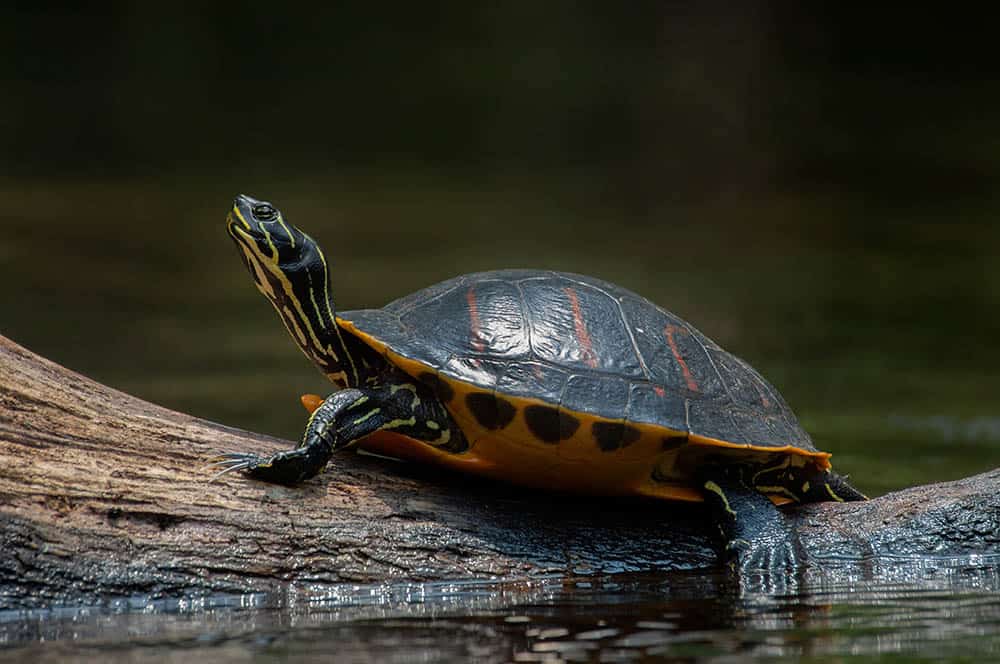North Carolina is a great environment for many species of turtles to grow and thrive. If you are a turtle lover or live in the area, it can be helpful to know which ones you can find here. Keep reading as we look at the turtles that live in the Tar Heel State. Each entry has a picture of what it looks like and a short description to help you learn more about it. This way, you can become more informed about the local wildlife!

The 15 Turtles Found in North Carolina
1. Eastern Box Turtle
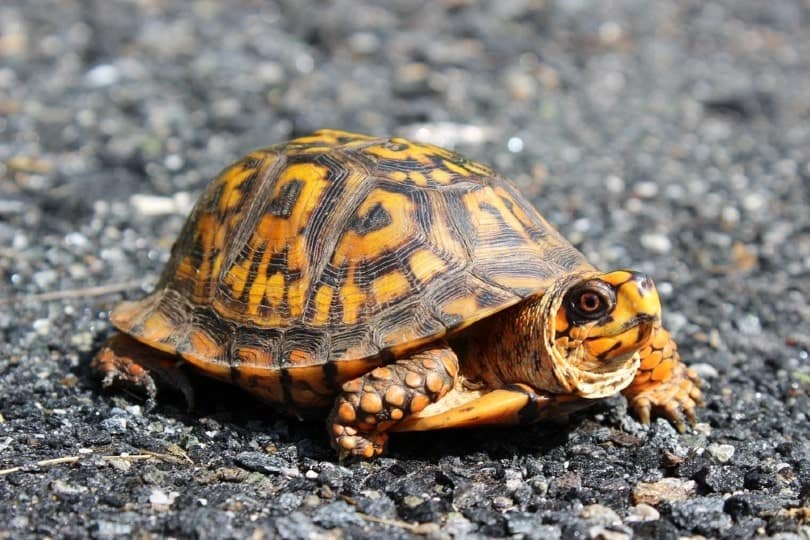
| Species: | Terrapene carolina carolina |
| Longevity: | 40 to 100 years |
| Good to own as a pet?: | Yes |
| Difficulty: | Beginner |
| Adult size: | 4–7 inches |
The Eastern Box Turtle is native to much of the east coast of the United States, including North Carolina. While technically a pond turtle, it prefers to spend much of its time on land. It’s a slow-crawling turtle with a long lifespan—more than 100 years!
2. Bog Turtle

| Species: | Glyptemys muhlenbergii |
| Longevity: | 40 years |
| Good to own as a pet?: | Yes |
| Difficulty: | Beginner |
| Adult size: | 3.5–5 inches |
The Bog Turtle is one of the rarest species on this list. Scientists first found it in Pennsylvania in 1801, but its natural habitat extends to North Carolina. It looks similar to a spotted turtle but is more closely related to the Wood Turtle. It’s the smallest species in North America and rarely grows larger than 5 inches.
3. Eastern River Cooter
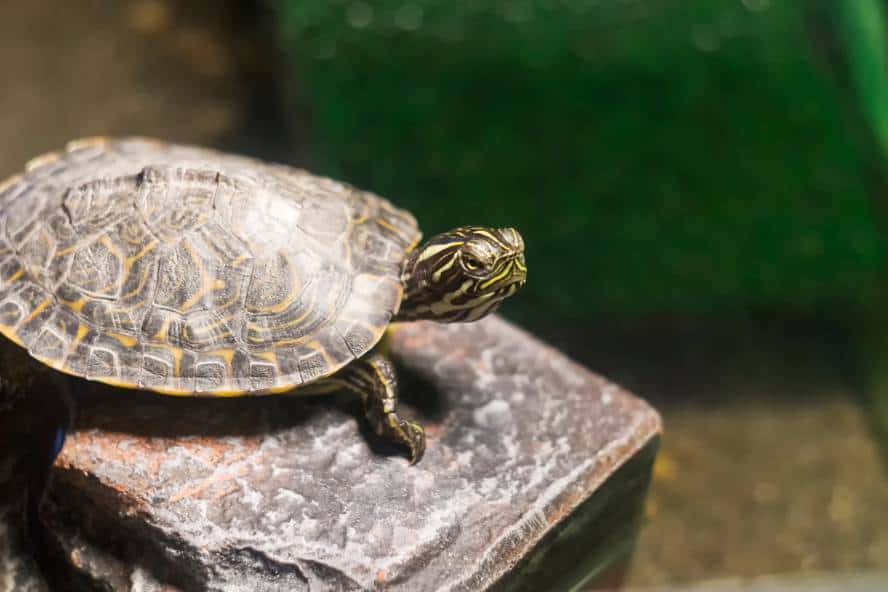
| Species: | Pseudemys concinna |
| Longevity: | 20–40 years |
| Good to own as a pet?: | Yes |
| Difficulty: | Beginner |
| Adult size: | 8–16 inches |
You can find the Eastern River Cooter in rivers, lakes, ponds, and sometimes even large, semi-permanent puddles. It’s a dark green or brown turtle that often grows to more than 1 foot long. It’s a skittish breed that dives at the first hint of trouble, but you can sometimes see it basking in the sun.
4. Florida Cooter
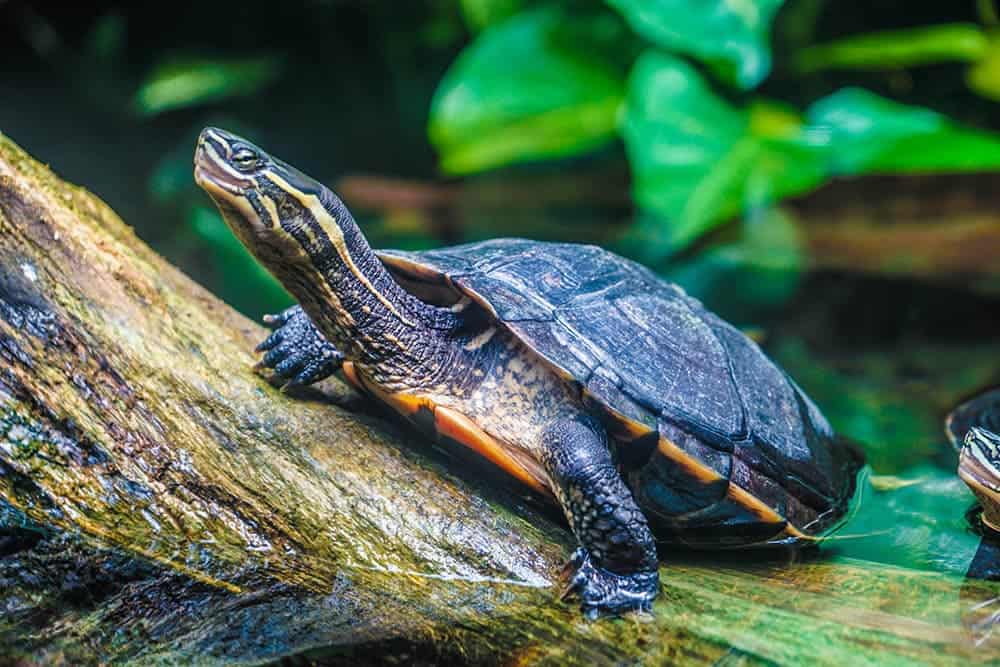
| Species: | Pseudemys floridana |
| Longevity: | 20–40 years |
| Good to own as a pet?: | Yes |
| Difficulty: | Beginner |
| Adult size: | 8–16 inches |
Despite its name, you can find the Florida Cooter in North Carolina. It can grow to more than a foot long and often weighs as much as 8 pounds. It enjoys lakes, ponds, and slow-moving streams. It’s a popular pet and a tasty food in many areas of the United States.
5. Northern Red-Bellied Cooter

| Species: | Pseudemys rubriventris |
| Longevity: | 40–55 years |
| Good to own as a pet?: | Yes |
| Difficulty: | Beginner |
| Adult size: | 8–12.5 inches |
The Northern Red-Bellied Cooter is a large breed that can often grow to more than 1 foot long. You can still find it in North Carolina, Delaware, Maryland, and New Jersey, but its numbers are declining rapidly in Pennsylvania, where it is currently an endangered species.
6. Diamondback Terrapin

| Species: | Malaclemys terrapin |
| Longevity: | 25–40 years |
| Good to own as a pet?: | Yes |
| Difficulty: | Beginner |
| Adult size: | 4–6 inches |
The Diamondback Terrapin is a turtle that you can find in the brackish waters of the eastern and southern United States, including North Carolina. Its name is a reference to the diamond pattern on the shell. Its body can have several colors, including yellow, white, gray, and brown.
7. Eastern Mud Turtle
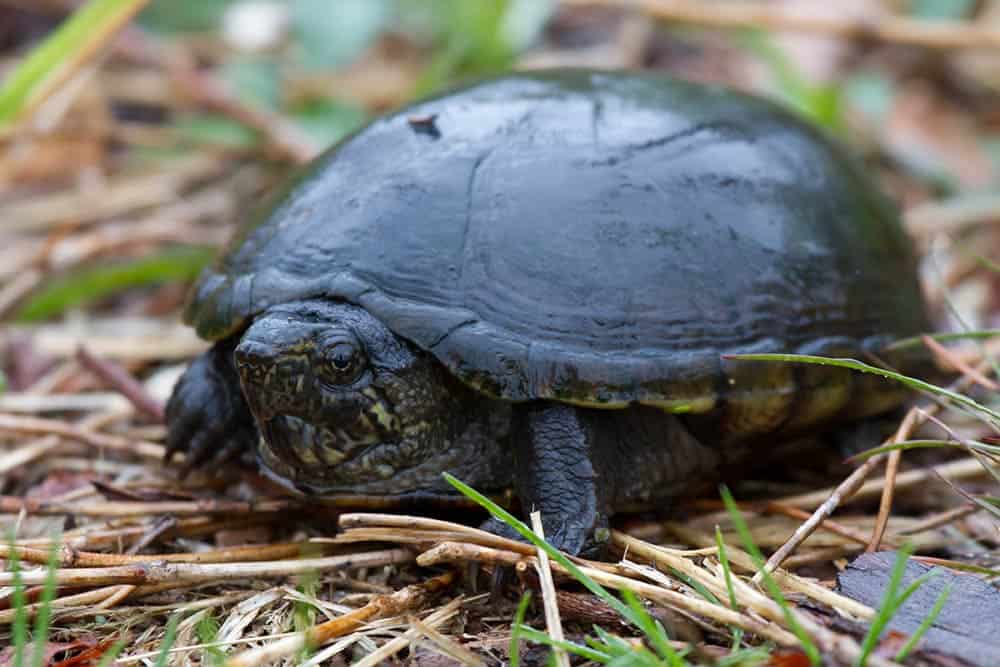
| Species: | Kinosternon subrubrum |
| Longevity: | 50 years |
| Good to own as a pet?: | Yes |
| Difficulty: | Beginner |
| Adult size: | 3–5 inches |
The Eastern Mud Turtle is a small breed that you can find in much of the southern United States, including North Carolina. It likes rivers, lakes, and streams, as long as there is plenty of vegetation.
8. Striped Mud Turtle
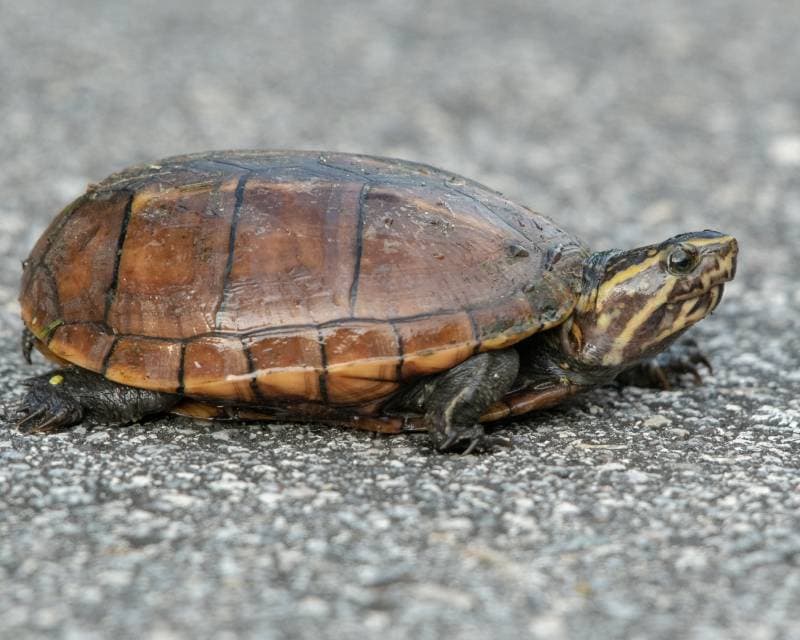
| Species: | Kinosternon baurii |
| Longevity: | 50 years |
| Good to own as a pet?: | Yes |
| Difficulty: | Beginner |
| Adult size: | 4–5 inches |
The Striped Mud Turtle is native to the southeastern United States, and it’s easy to raise. It tends to stay on land more than other mud turtles, and you might find it looking for food in cow dung. It gets its name from long, light-colored stripes on its shell.
9. Eastern Painted Turtle
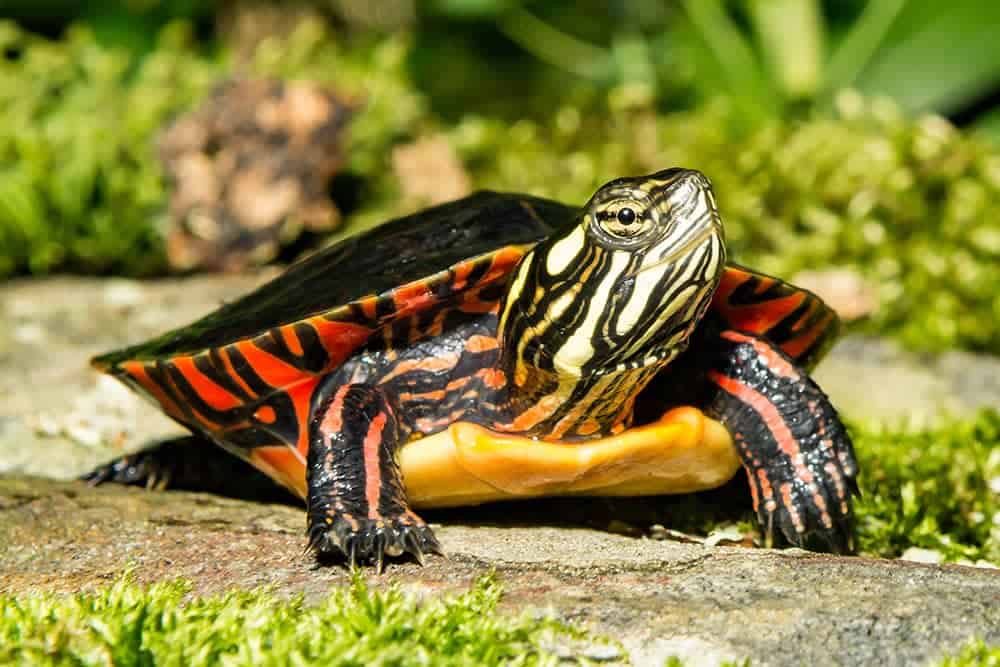
| Species: | Chrysemys picta picta |
| Longevity: | 30–50 years |
| Good to own as a pet?: | Yes |
| Difficulty: | Beginner |
| Adult size: | 4–10 inches |
The Eastern Painted Turtle has an olive-green upper shell that sometimes has a single stripe down the center, and it will also have red markings around the edge. The bottom shell is usually a dark yellow color and can sometimes have spots. The turtle’s upper jaw has the shape of an inverted V with yellow stripes.
10. Red-Eared Slider
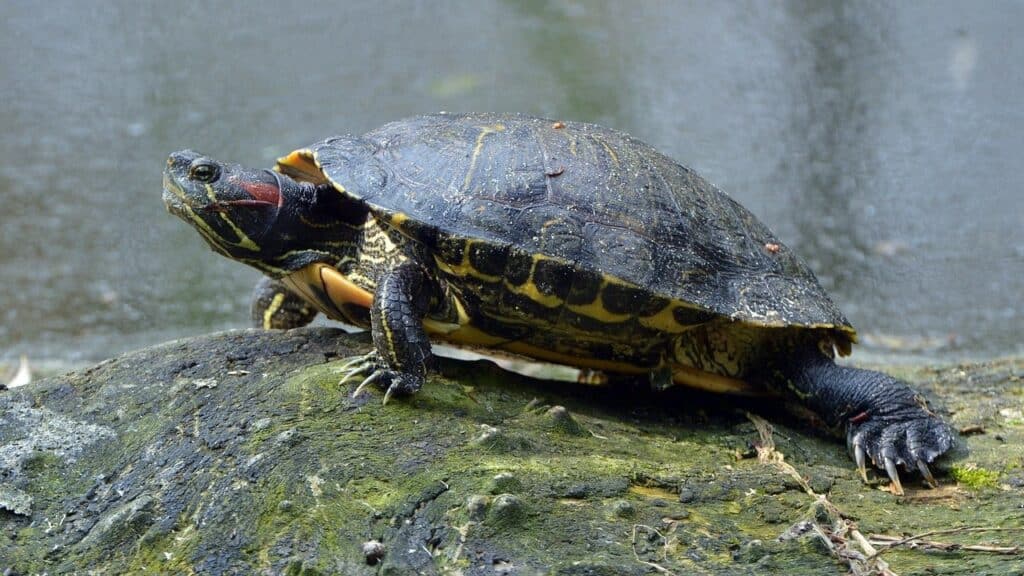
| Species: | Trachemys scripta elegans |
| Longevity: | 20–40 years |
| Good to own as a pet?: | Yes |
| Difficulty: | Beginner |
| Adult size: | 6–8 inches |
The Red-Eared Slider is a semi-aquatic turtle that you can find all over North Carolina, though it’s not native to the state. It’s the most popular turtle in the United States, and many people consider it invasive. It gets its name from a small red stripe near the ears. It’s also adept at sliding off rocks quickly to avoid danger.
11. Yellow-Bellied Slider
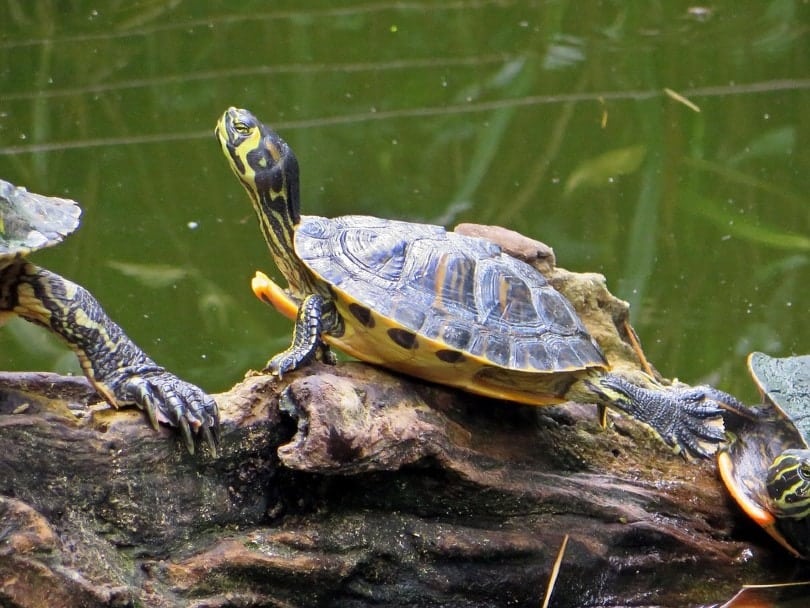
| Species: | Trachemys scripta scripta |
| Longevity: | 20–40 years |
| Good to own as a pet?: | Yes |
| Difficulty: | Beginner |
| Adult size: | 5–12 inches |
The Yellow-Bellied Slider is another slider turtle that you can find in North Carolina. This species likes to stick to the south, and it grows darker as it ages. Its yellow belly often has an S-shaped stripe that makes this turtle easy to identify. It makes a great pet because you can keep it in a small cage.
12. Eastern Chicken Turtle
| Species: | Deirochelys reticularia reticularia |
| Longevity: | 15–30 years |
| Good to own as a pet?: | Yes |
| Difficulty: | Intermediate |
| Adult size: | 4–10 inches |
The Eastern Chicken Turtle gets its name from the way that its meat tastes like chicken. It has a long-striped neck that is almost as long as its shell. You can usually see these turtles walking across the land as they migrate between aquatic environments. It’s a timid animal, but it will bite if you get too close.
13. Common Musk Turtle

| Species: | Sternotherus odoratus |
| Longevity: | 40–60 years |
| Good to own as a pet?: | Yes |
| Difficulty: | Intermediate |
| Adult size: | 4–5 inches |
The Common Musk Turtle is also called the Stinkpot because of the musky odor it releases. It’s a small dark-colored turtle with a domed shell. It has a long neck, short legs, and yellow lines on its neck. It has a triangular-shaped head with a pointed snout, and it likes to spend most of its time in the water.
14. Stripe-Necked Musk Turtle
| Species: | Sternotherus minor peltifer |
| Longevity: | 20–50 years |
| Good to own as a pet?: | Yes |
| Difficulty: | Intermediate |
| Adult size: | 3–5 inches |
The Stripe-Necked Musk Turtle is a small turtle that you can find in North Carolina. It’s also called the Loggerhead Musk Turtle, a name that it gets due to its large head. It prefers clean water, and you can often find it in lakes, streams, and ponds.
15. Spotted Turtle
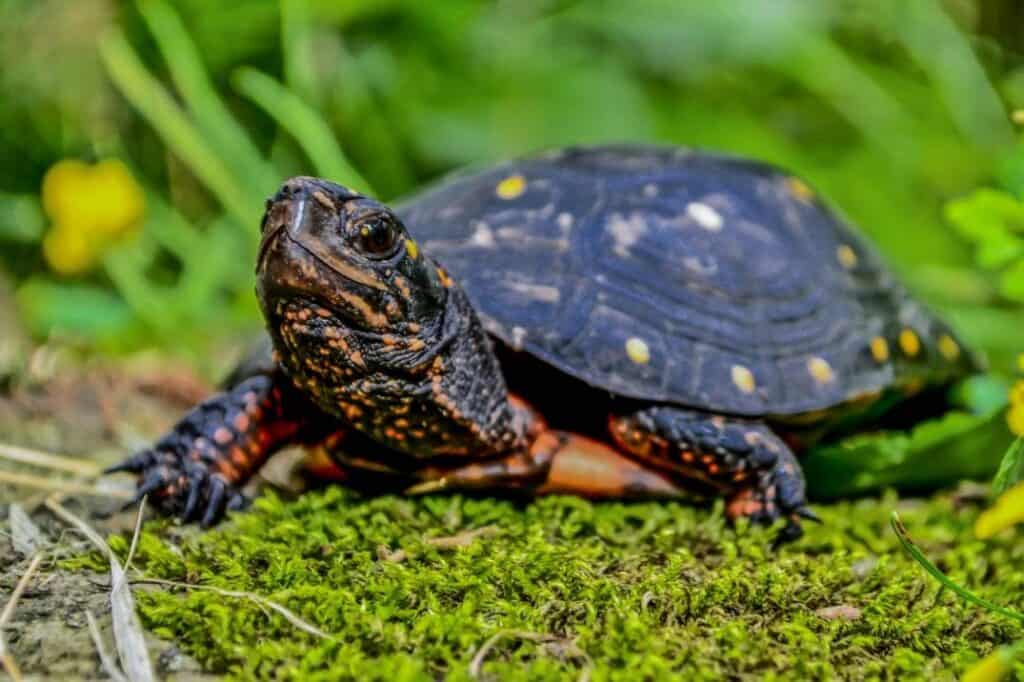
| Species: | Clemmys guttata |
| Longevity: | 25–50 years |
| Good to own as a pet?: | Yes |
| Difficulty: | Expert |
| Adult size: | 4–5 inches |
The Spotted Turtle is a broad species with short legs that keep it very low to the ground. The dark-colored shell will have numerous yellow spots, which is where it gets its name. It prefers shallow water, and you can usually find it in puddles created by heavy rains. It’s a hardy turtle with a wide range that extends into Canada.

Conclusion
There are several different species of turtles that you can find in North Carolina. Of the ones on this list, the Eastern Painted Turtle is the easiest to find, followed closely by the Florida Cooter. Turtles make excellent pets because they are easy to raise, and many have lifespans that exceed 50 years.
You may also want to know:
Featured Image Credit: M.E. Parker, Shutterstock
